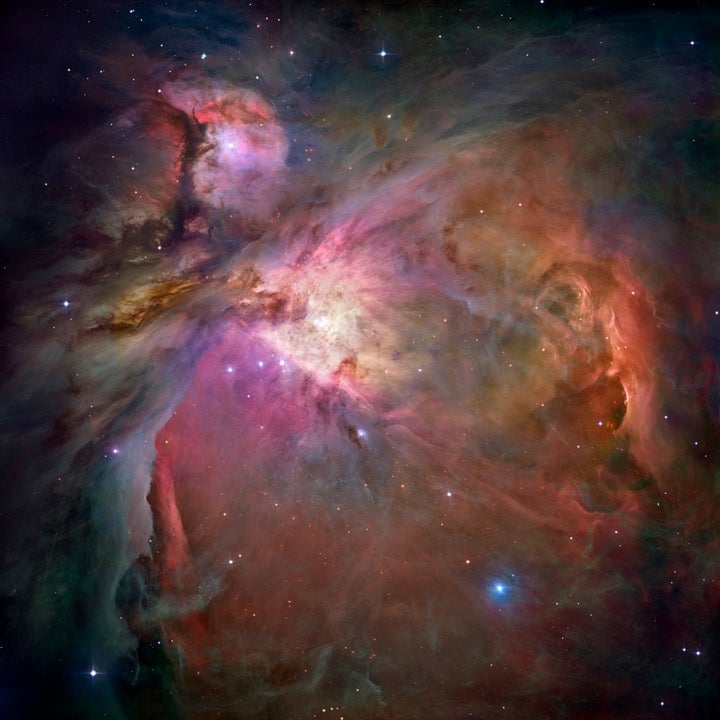
Approximately 4.5 billion years ago, a cold cloud of gas and dust buried deep in one of the Milky Way galaxy’s spiral arms started to collapse. From there, gravity worked its magic. The cloud began to contract and fragment; one of those fragments was destined to become our Sun and the rest of the solar system.
As gravity continued to compress the solar nebula, the central region that would become the Sun drew in the vast majority of material.
Because the nebula was rotating, however, not all of the gas and dust could fall into the proto-Sun being forged at the center. Instead, some of it formed a disk that ultimately would condense into the planets and other, smaller members of the solar system.
Here are the objects in our inner solar system.
The Sun
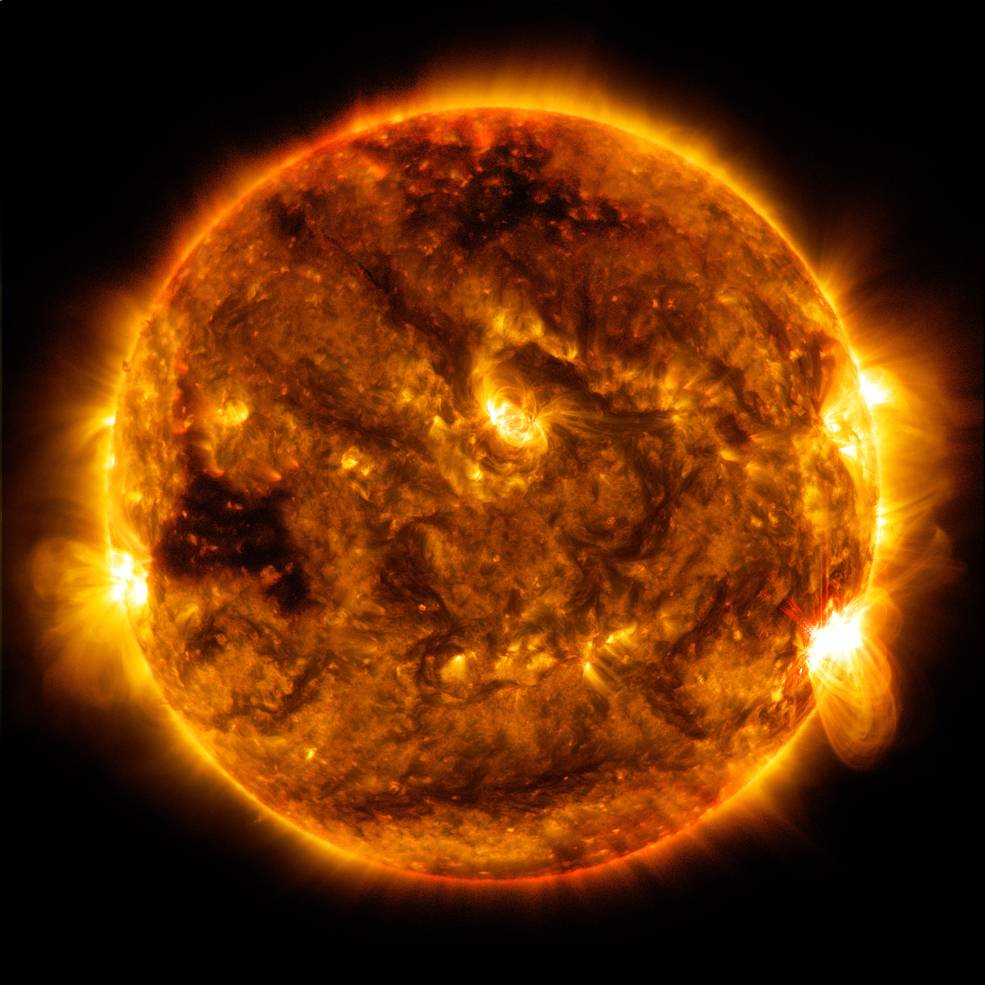
At this stage of the solar system, the proto-Sun continued to contract and, as it did so, grew hotter. This persisted until its central temperature rose high enough to ignite the fires of nuclear fusion. The heat created by these nuclear reactions produced a pressure that counteracted the inward pull of gravity, and the object became the stable star we call the Sun.
The Sun continues to produce energy in the same way. In the core, where temperatures reach 27 million degrees Fahrenheit (15 million degrees Celsius) positively charged protons (the nuclei of hydrogen atoms) can overcome their mutual repulsion and fuse together to create helium.
Despite being a huge ball of gas, the Sun appears to have a sharp edge because the energy radiates from a thin layer only a couple hundred miles thick, compared with the Sun’s overall radius of 435,000 miles (700,000 kilometers).
Astronomers call this thin layer the photosphere, and it has an average temperature of about 10,000 F (5,500 C). The photosphere represents the lowest level of the Sun’s atmosphere. Above it lies the slightly hotter chromosphere, another thin layer that measures between 1,000 and 2,000 miles thick. Above the chromosphere lies the corona, a superheated region where temperatures rise to millions of degrees. Because the Sun’s gravity isn’t strong enough to hold onto such hot gas, the outer atmosphere essentially boils off into space. This “solar wind” permeates the solar system.
The most conspicuous features on the Sun are aptly called sunspots. These dark splotches belong to the photosphere. Sunspots glow at a temperature some 1,500 kelvins (2,700° F) cooler than the photosphere and thus don’t emit as much light as the surrounding photosphere.
Sunspots can last anywhere from a few hours to a few months. Sunspots also tend to cluster, with some sunspot groups containing a hundred or more individual spots. These large groups possess strong magnetic fields and often give rise to flares, the largest explosions in the solar system. A typical flare lasts for 5 to 10 minutes and releases as much energy as a million hydrogen bombs. The biggest flares last for several hours and emit enough energy to power the United States (at its current rate of electric consumption) for 100,000 years.
Observations of sunspots over the past couple centuries show that the number of spots varies with time. This solar cycle averages about 11 years from sunspot maximum to minimum and back again.
Mercury
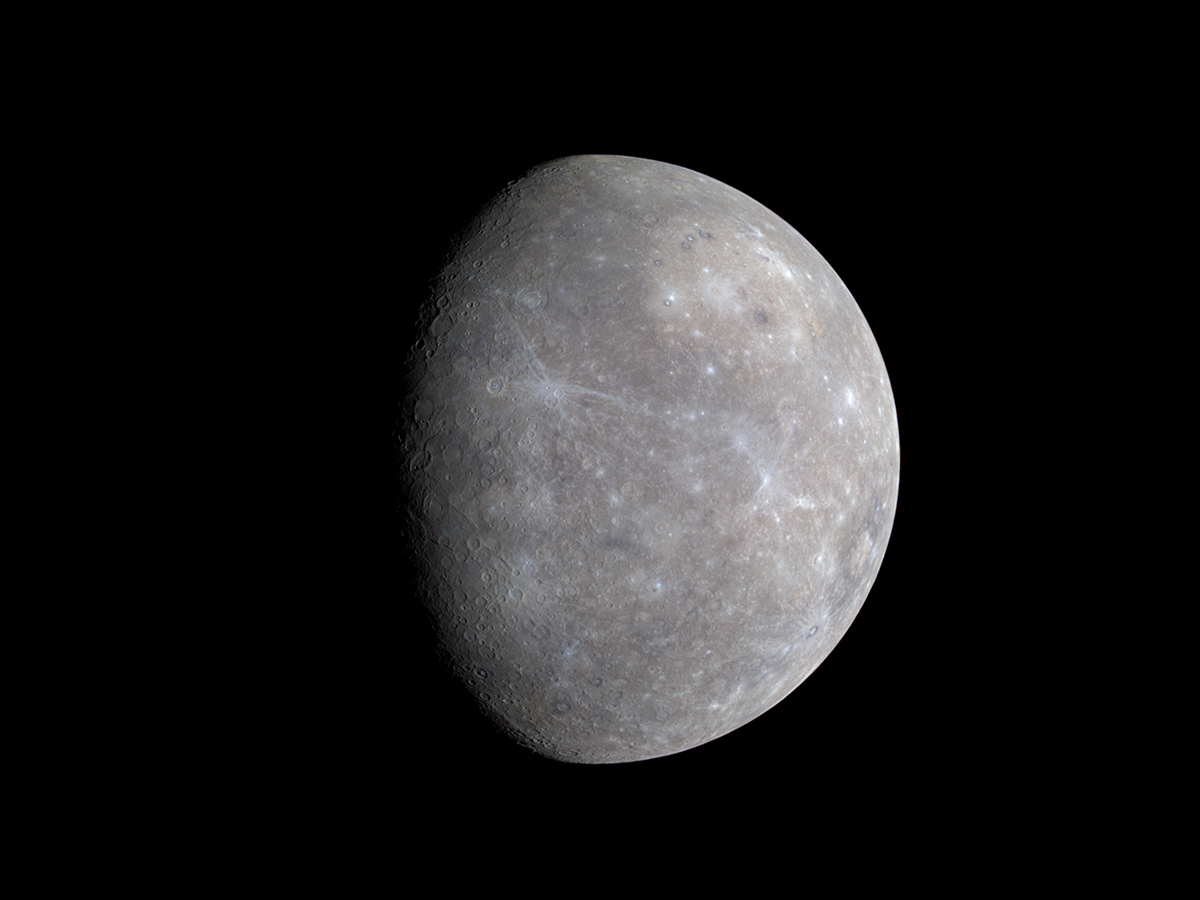
Observers have known about Mercury’s existence since antiquity. It’s one of the five planets visible to the naked eye, along with Venus, Mars, Jupiter, and Saturn. Named after the swift Roman god of trade, Mercury takes just 88 Earth days to orbit the Sun. However, its day (from one sunrise to the next) is double that — it’s 176 Earth days.
This innermost planet is also the smallest. It’s about 2.6 times smaller than Earth and contains about 5.5 percent of our planet’s mass. Mercury is also the second densest planet — right behind Earth.
Just like the other terrestrial planets, Mercury has a rocky composition. Its core makes up more than 40 percent of its mass. Compare that to Earth, whose core is only about 16 percent of its total mass. Astronomers think the reason for the core’s high mass is because it is mostly iron.
You might think that given Mercury’s distance from the Sun (just about 38 percent of Earth’s), it would always be boiling hot. Mercury has virtually no atmosphere, so while the side facing the Sun is a scorching 800 F (430 C), the planet’s dark side can drop to –300 F (–180 C).
Using radar, scientists have detected hints of ice in permanently shadowed regions on the planet’s poles. How could ice exist on a planet so close to the Sun? Well, whereas Earth’s axis tilts about 23.5 degrees to the ecliptic plane, Mercury’s axis is essentially straight up and down. So the Sun never shines down onto the innermost planet’s poles, and the bottom of craters at the north and south poles remain shadowed (and cold).
Oddly, this inner planet also has a small magnetic field. It’s the only other terrestrial planet — besides Earth — with a global field. While scientists think the liquid magma moving around outside Earth’s solid core produces our planet’s magnetic field, they aren’t sure what causes that of Mercury. It would be surprising if Mercury had a molten core because it should have cooled billions of years ago.
Venus is the next stop in the inner solar system

Venus is the third brightest object in our sky after the Sun and the Moon. It appears more than 10 times brighter than the brightest star, Sirius. It appears either in the western sky after sunset or in the east before dawn.
Venus measures 7,520 miles across (12,100 km. And it contains slightly more than 80 percent of Earth’s mass. No other planet in the solar system comes as close to matching Earth. In fact, until the middle of the 20th century, many scientists suspected that Venus was a near twin to Earth. They were wrong — very wrong.
Thick clouds cover Venus, completely shrouding its surface from view. In the early 1960s, astronomers shot radar signals at the planet and learned that it rotates once every 243 Earth days — longer than its 225-day orbit. This makes Venus the only planet in our solar system that takes longer to rotate on its axis than it does to revolve around the Sun.
Planetary scientists soon learned this was not Venus’ only odd characteristic. It has an atmosphere nearly 100 times as dense as Earth’s. The pressure you would feel standing on its surface would be equivalent to being about 3,000 feet, or nearly 1 kilometer, deep in Earth’s ocean. The atmosphere consists almost entirely of carbon dioxide, which acts like a giant blanket and promotes a runaway greenhouse effect that raises the surface temperature to a brutal 900 F (475 C). That’s hot enough to melt lead. Lightning erupts from the clouds, which are made not of water vapor, but of sulfuric acid.
Many planetary scientists now think intense volcanism resurfaced Venus about 500 million years ago, but then died relatively quickly. If true, it makes Venus unique in the solar system. Only on Venus did activity ramp up fairly recently and then die down, leaving a surface almost entirely the same age across the planet.
Earth
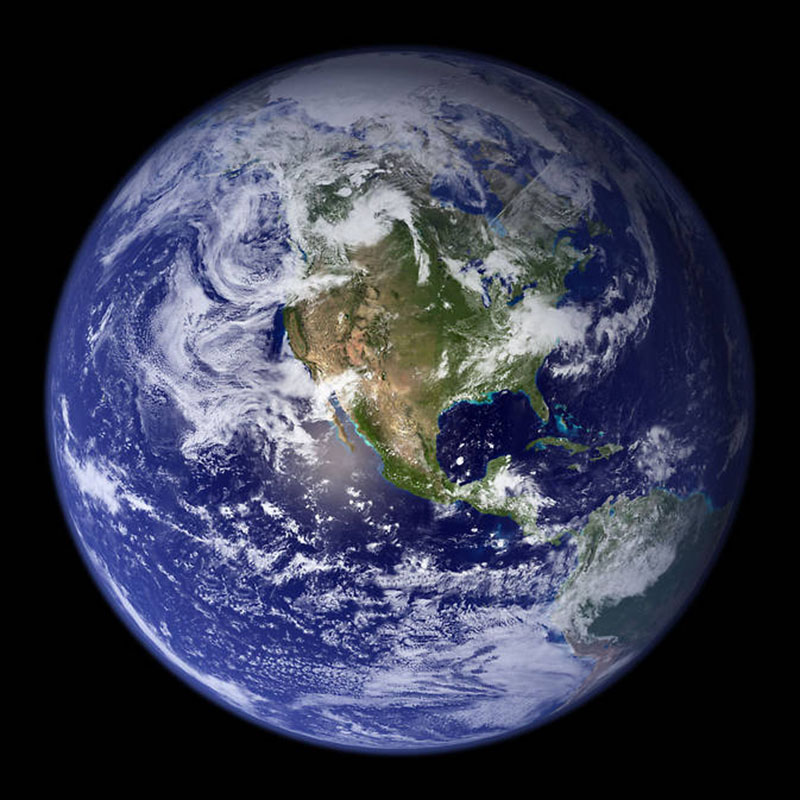
Despite the beautiful sights found elsewhere in the solar system, Earth remains the favorite planet for many. If nothing else, it’s home to all
ur favorite people, places, and burger joints; unless you’re an astronaut, everything you’ve ever heard with your own ears and touched with your own fingers has been on this, cosmically speaking, tiny planet.
Earth’s diameter spans 7,920 miles (12,746 km) at the equator; it takes a little under 24 hours to rotate once, and about 365 days to orbit the Sun once. These last two, of course, are better known as a day and a year.
At an average distance from the Sun of about 93 million miles (150 million km), Earth inhabits a special place called the habitable zone. This is the area around a star where a planet can maintain liquid water. Sometimes nicknamed the Goldilocks Planet, it is neither too hot like the inner planets nor too cold like the distant giant planets to harbor life.
This makes Earth the most familiar planet in the inner solar system, but also the strangest. No other world has been found to host life either in our solar system or beyond. But scientists are looking. And our planet is the perfect testing ground for techniques and technologies before we send them to other worlds.
But the more we learn, the more we see that our planet is one of the weirdest places we’ve ever encountered, uniquely shaped and forever altered by the life-forms it sustains.
Earth is the only planet with abundant liquid water driving an active water cycle. From weather to weathering, the effects of water are everywhere. Our home world is also the only known planet with active plate tectonics, in which distinct pieces of crust are constantly created and destroyed in a planetwide recycling program that drives phenomena like earthquakes and volcanoes.
The Moon
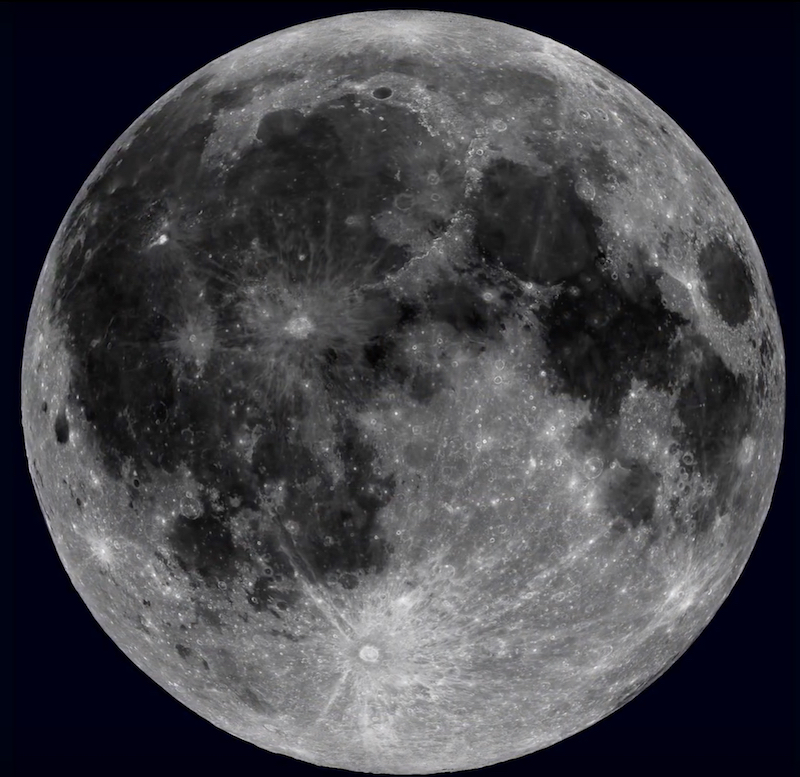
People have known about the Moon practically forever, predating their knowledge of most astronomy or, really, anything else. After the Sun, it’s the brightest object in the sky. But did you know how much the Moon has impacted the Earth?
Astronomers think the Moon formed when a Mars-sized object slammed into a young Earth billions of years ago. The rocks and debris that shot out from the collision then formed a ring around our planet, which eventually coalesced into the Moon as we know it. Well, almost: The distinctive patterns of dark spots, or maria, on the Moon’s surface are the result of lava flows from the brief period, long ago, when our satellite was still geologically active. And, of course, the myriad craters have come about from smaller collisions over the Moon’s long lifetime.
Our natural satellite has affected everything from the strength of Earth’s tides to the stability of our planet’s 23.4° tilt. Without the Moon, our tides would be solely influenced by the Sun — and, given its vast distance, would consequently be much weaker. This would have brought about very different landscapes at the interface where water meets land. And with no Moon, our planet’s rotation axis would wobble unpredictably, destabilizing the climate on timescales of just a few thousand years.
The Moon measures some 2,160 miles (3,480 km) across, about a quarter of Earth’s diameter, but its mass is only about 1 percent of Earth’s. In all our history, only 12 people have ever walked on the surface of the Moon, which is still an impressive feat considering it’s about 239,000 miles (385,000 km) away.
Mars
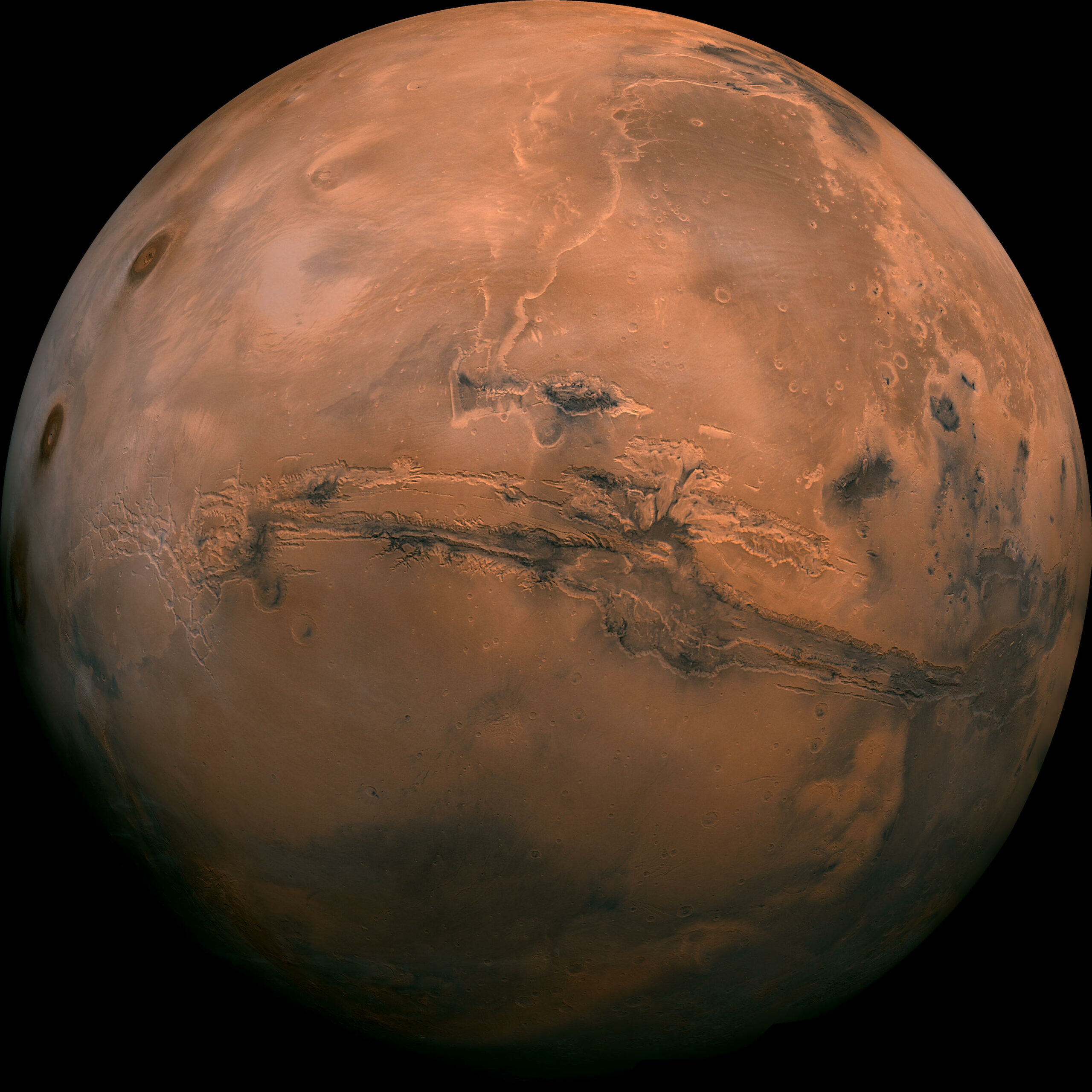
Aside from Earth, Mars is the most explored world in the solar system — enjoying the lion’s share of planetary research funding for several decades.
Mars is named after the Roman god of war thanks to its red glow reminding the ancients of blood. What causes the red color? The planet’s dust contains iron oxide, which is rust.
The Red Planet is approximately 4,200 miles (6,760 km) wide, which corresponds to roughly half the width of Earth. It contains just over 10 percent of our planet’s mass. Mars’ orbit takes it within about 1.38 times the Earth-Sun distance at closest approach. Its farthest point is at roughly 1.67 times the Earth-Sun distance, and it takes nearly 687 Earth days to complete this orbit. Mars’ day is just a little longer than ours at 24.6 hours.
While Mars is geologically inactive now, astronomers see evidence of a much more turbulent past. Giant volcanoes dot the surface, and most craters are younger than 1 billion years.
The thin martian atmosphere prevents water from existing on the planet’s surface today. It would evaporate almost immediately. However, astronomers have strong evidence that the Red Planet used to have liquid water. From networks of dried river channels to tumbled and smoothed BB-sized rocks, the martian surface is rife with examples of past water.
The Red Planet does harbor water ice at its northern and southern polar caps. Recent missions have also found water ice below the martian surface. The fact that water existed on Mars is well accepted as an indicator that the Red Planet might hold evidence of once-living organisms.









